The Subaru 360 is no Ferrari, but it’s a thrill nonetheless
The kids were staring as we passed Bowman Elementary School in Lexington, Massachusetts. They grinned, and shouted, “What kind of a car is that?!” They’d never seen anything like it!
Neither had a young woman who was visiting the United States from Japan for the first time, some years ago. A friend had importuned me to give her a tour of Lexington. After showing her the Battle Green and other Revolutionary War era sites, I took her to photographer Jon Chomitz’ driveway to show her a relic from her own country.
“The little SuBAARoo,” as the Subaru 360 was known in the television ads that ran 50 years ago, weighs just under a thousand pounds—rendering it exempt from safety and environmental regs. That’s lucky for American owners, because it would never pass either. As you drive, the scent of eau de motor oil wafts into the cockpit, along with the high decibel percussion of the two-stroke. The 360—that numeric refers to the displacement in cubic centimeters—is more than three feet shorter than the VW Beetles that, at the time, were the biggest infestation of Big Three territory. Better lock the door lest your knee knock the handle as you’re rounding a corner. The cockpit is sleeping-bag snug.

360s are “station cars,” says Chomitz, using an American and British term for a car you take to the train station—a car that gives you that first and last mile, in the parlance of America embarking on an energy diet. They are also good for maneuvering and parking on the tiny, clogged streets of Tokyo.
Indeed, 360s are well suited to short hops, since they needn’t be warmed up. “I let it sit over the winter and then in spring just turn the key and let it go,” says Chomitz. He likes to use it to shop at Trader Joe’s, 1.4 miles from his house.
The 360 was the first Japanese kei car to be mass-produced, in a run that lasted from 1958 to 1971. They were imported into the US beginning in 1968, by Malcolm Bricklin. According to Hemmings, “just under 10,000… and their derivatives were officially imported to America in the initial three years…” Chomitz has a 1970.
For Chomitz, who has had a Citroën 2CV for 25 years, and who recently procured a 1971 Citroen DS wagon, the 360 was an accidental acquisition.

Chomitz was palling around with Charles Gould, a fellow member of the Arlington (MA) Classic Car Club and someone he describes as “an avid collector of the world’s most interesting cars.” Among many others, Gould’s fleet includes a Messerschmitt, a Panhard, some Citroens, and a Goggomobil.
At that time—2008—Gould already had two 360s. “We were out retrieving a third one he’d bought,” says Chomitz. “We picked up this cute, repainted 360 and had it on his trailer. [Gould] said, ‘I really don’t need three of these.’ I said, ‘I’ll take one.’”
Chomitz “got a dusty, but complete non-runner with no rust, from Charles’ fleet,” he says. He quickly went to work on it. “Nobody had messed with this car since the ’70s,” says Chomitz. “I was surprised when I got into it, it was an autoclutch that had been converted to a regular clutch.” (360s came with an autoclutch.) Someone had done a lousy job.
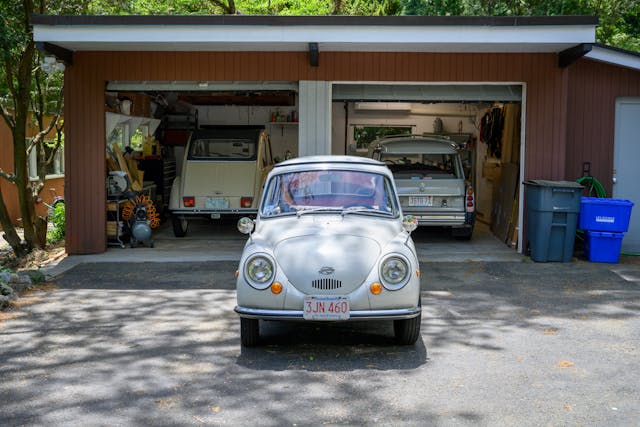
Then Chomitz waxes philosophical. “You always get surprises when you pick up [a new-to-you classic car]. If a car survives in that state [of disrepair], there has to be a reason it was there—someone didn’t like it, someone died, or something catastrophic went wrong with it.”
“You often find a car that’s been sitting for 30 to 40 years because they couldn’t get it running again,” says Chomitz. “I know someone who got a ’59 DS. Somebody had killed the transmission and parked it. Sixty years later someone picks it up, and rebuilds the transmission.”
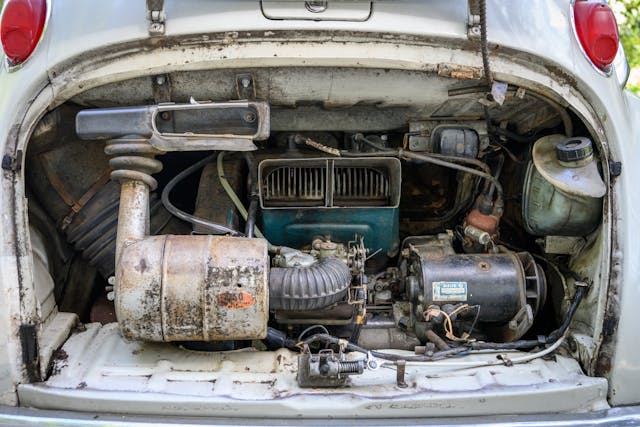
In the case of the 360, “The first thing we did was fire up the engine,” says Chomitz. “It took fifteen minutes to get the thing running,” he says. The brakes were another matter.
“The brake fluid had turned into a gray sand that needed to be removed from all of the brake lines. I rebuilt all of the wheel cylinders and the master, and had the flexible hoses made by a company in Indiana. I filled the transmission with oil and it all fell out on the ground, so I ordered driveshaft seals from my local Subaru dealer. They couldn’t believe it, but the parts arrived at the dealer from Japan in a few weeks.”
“I went from front to back, checking each system. Making sure all of the electrical connections and grounds were clean, lubricating anything that was dry—like cables, pedal cluster, and door latches. When I did the brakes everything was cleaned, lubricated, and adjusted. I rebuilt the carb, tuned the engine and replaced the single belt. I put a nice set of 10-inch radials on it.” But Chomitz notes that he’s never rebuilt the engine, and never even opened it.”

“Ed Parsil and his Subaru 360 club were especially helpful,” says Chomitz. “The club produced reprints of the original shop manuals as well as a compilation of tips and tricks from 30+ years of the club’s newsletters.” (Now 86, Parsil says he still helps club members “by reconditioning carburetors and oil pumps for their 360s when they need this done.” He also responds to emails “from a lot of members when they have questions about working on their Favorite Vehicles.”)
“Once I got [the 360] sorted—and it took me a long time—it’s been trouble-free,” says Chomitz. “But I was really careful with the mechanicals.”
It should probably be said that the car has a mere 18,000 miles on it, of which the last 5000 are Chomitz’s.

The 360’s bad reputation stateside is undeserved, says Chomitz. “It’s considered the worst car ever sold in the U.S. But anything I’ve worked on in that car has been really well designed and executed. You work on the front brakes, there are two wheel cylinders in there on each side. It’s built like a truck, and very nicely put together. The doors close with a nice thunk.” He also notes some simple elegance. The car needs no fuel pump, as the gas tank sits directly above the engine.
In addition, “Everything in the car is in the right place—where you expect it, [unlike, say, an Isetta],” says Chomitz. “The car is really well thought-out. You have three pedals in front, you have the gear shift in the right hand. The turn signals are on the left stalk—everything is like a normal car.”
Chomitz prepped me, driving the car briefly while I watched, running through the gears, advising me to go easy on the brakes because the front suspension bottoms easily—which he gently demonstrated. He then explained that downshifting to second requires double clutching, and that you have to rev high before upshifting because running the car at low rpm is bad for the engine, and further that you shouldn’t use engine drag to slow the car on a hill, as lifting your foot off the gas shuts off lubrication as well as fuel because—as with any two-stroke—the oil is mixed with the fuel.
Between all that, and accounts I’d read suggesting the car to be hard to control, I approached it with mild trepidation. Chomitz’ assurances that those accounts were poppycock did little to settle my nerves, perhaps because the 360 is so tiny.
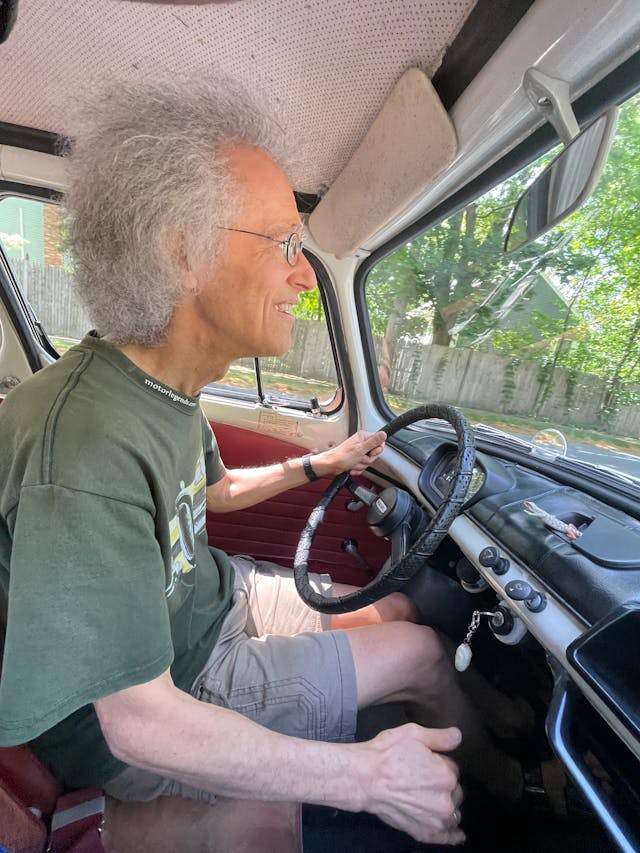
I did OK with it, accelerating in each gear until I could feel the torque subsiding, before I upshifted, and when downshifting to second, double-clutching respectably, thanks to having taught myself to do so on my beater ’62 Falcon around fifty years ago—which became a practical necessity after my excessive clutchless shifting had begun to ruin that car’s transmission.
Of course, there was also the steering, which felt vague to me, although Chomitz had assured me that it isn’t. It may have felt that way, he said, because the car lacks heft—especially over the front wheels—and because he only puts around 14 pounds of pressure in the front tires. Chomitz compared the feel to American power steering from the ’60s, and said that people had died in Corvairs when they’d put 32 pounds in the front tires, because with so little weight in front, tires under normal pressure had almost no grip.
Then there was the lack of the kind of power that one can use to get out of the way of trouble. Each horsepower pulls 39.8 pounds of 360, leaving the car only slightly more puissant than a Citroen Deux Chevaux (42.8 pounds) or a VW old Beetle (42.0 pounds).
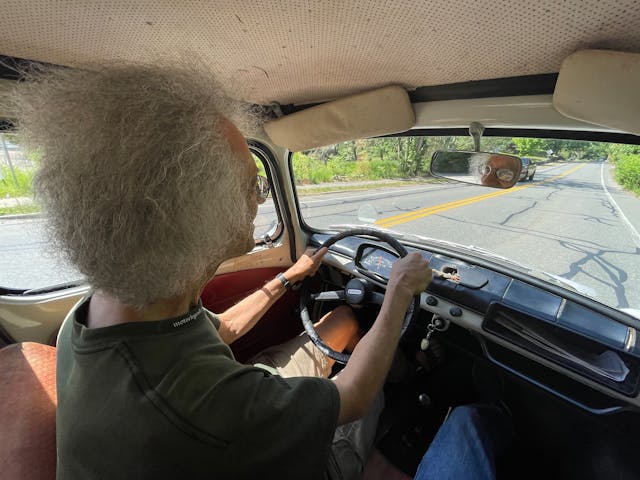
I soon set out on Rt. 2A, a main drag of a two lane road which follows closely the route that our Revolutionary War soldiers took from the Battle Green to “the rude bridge that arched the flood.” Even 30 mph felt nerve-wracking at first. Nonetheless, I soon accelerated to 35 and then to 40, to keep up with the traffic.
After around 5 miles, we headed back on 2A, my central nervous system remaining on high alert. Interestingly, I had felt totally comfortable driving Chomitz’ 2CV some years earlier, despite the fact that it weighs just 200 pounds more than the 360. Its larger size, functional seat and shoulder belt, and our neighborhood-only route probably made the difference.
But hearing Chomitz expound on the joys of the 360, I wondered if I’d missed the fun. “To me, it’s really nimble,” he says. “You can use all your driving skills and look down, and you’re going about 40 mph.”
“I’ve always made fun of people who have really, really fast, super-handling cars,” says Chomitz. “You’re breaking the law in second gear. You can drive the … out of this car and you’re not breaking the law. You get all the thrill of some supercar but you’re just tooling around in a 360. I really toss it around, especially when there’s nobody in the car!”
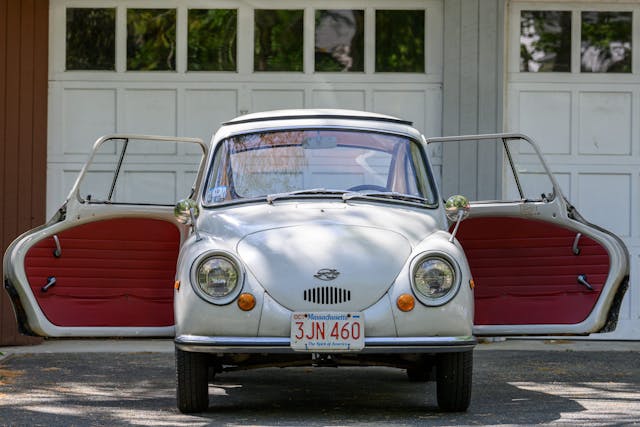

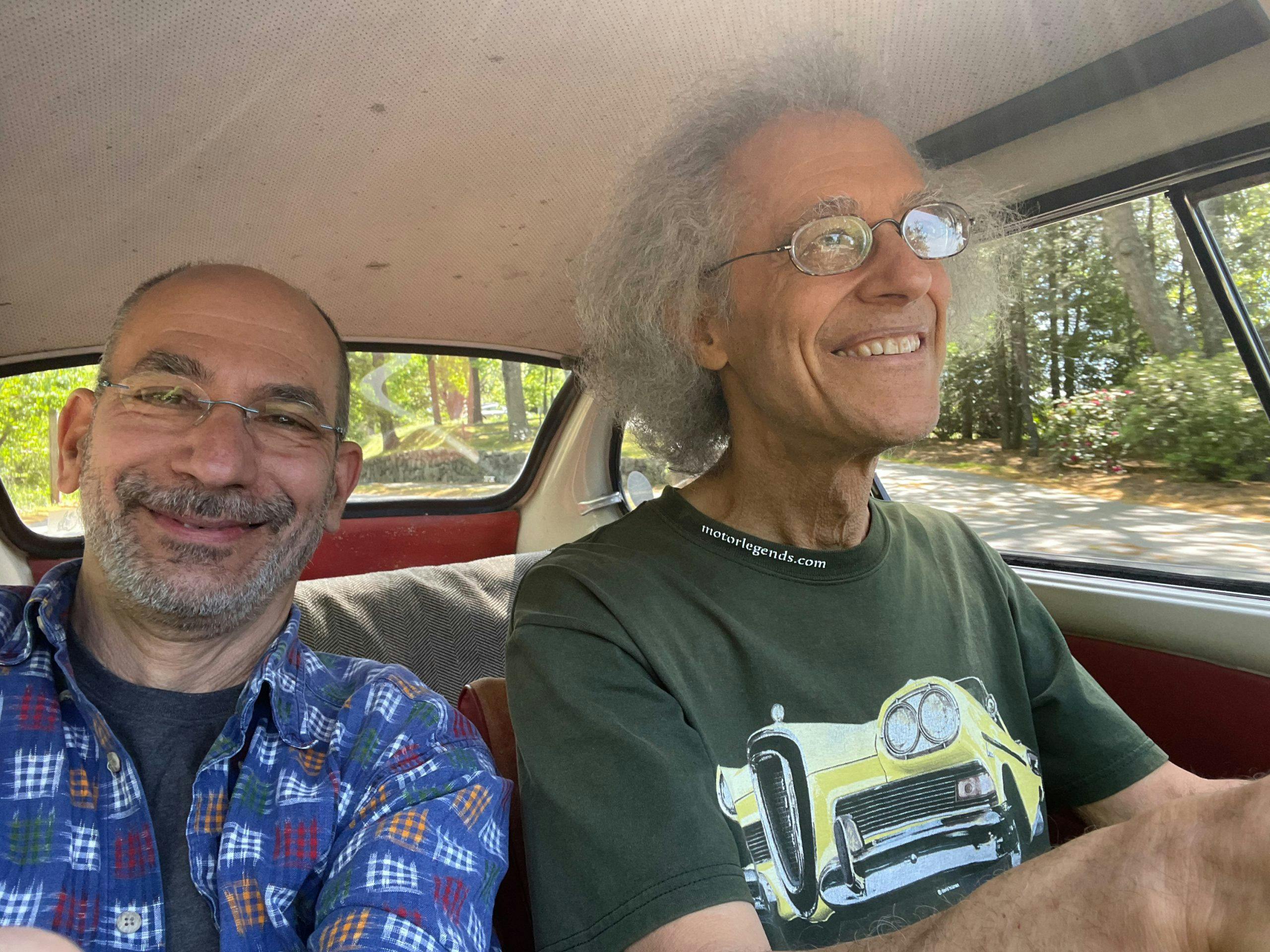
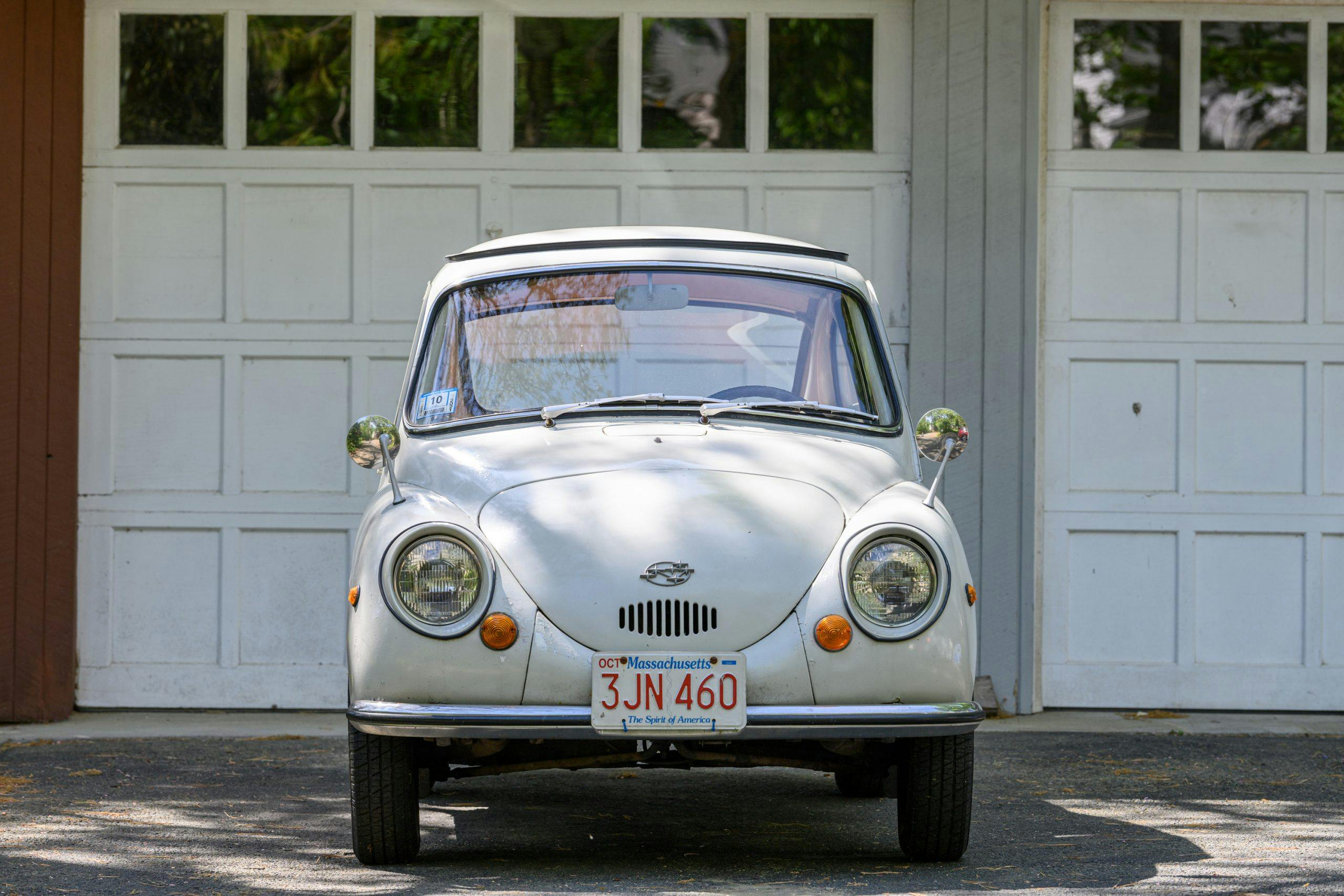

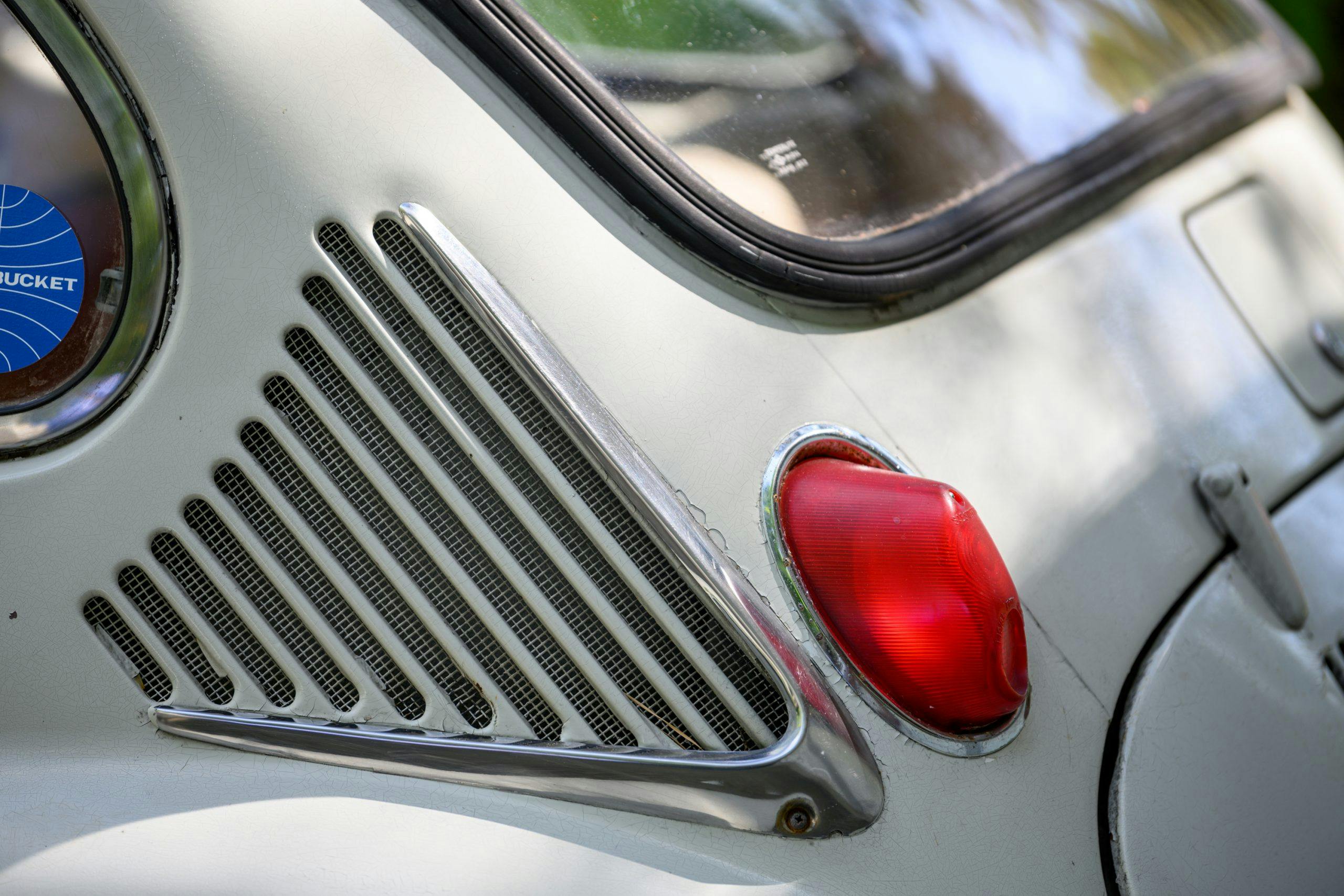
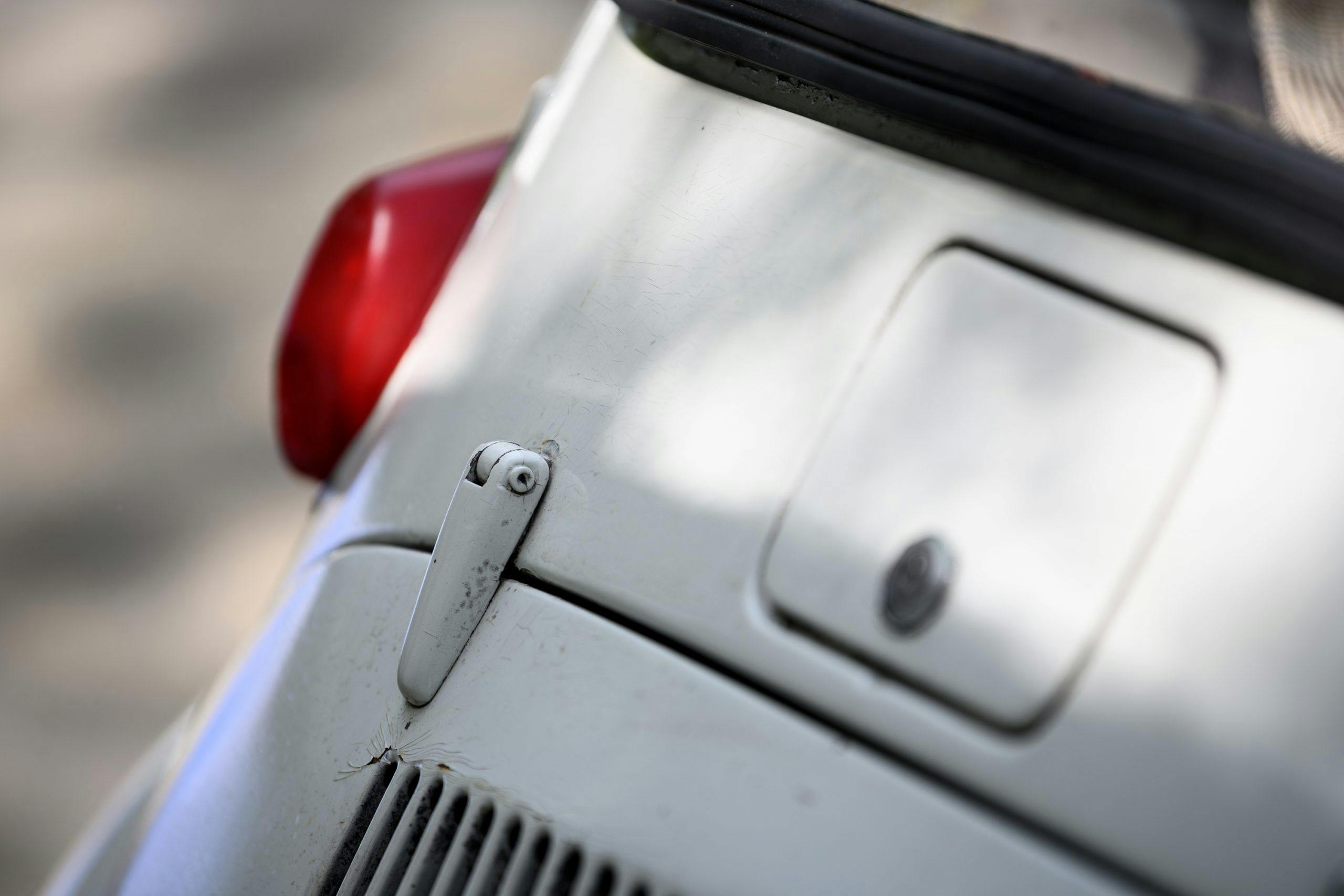
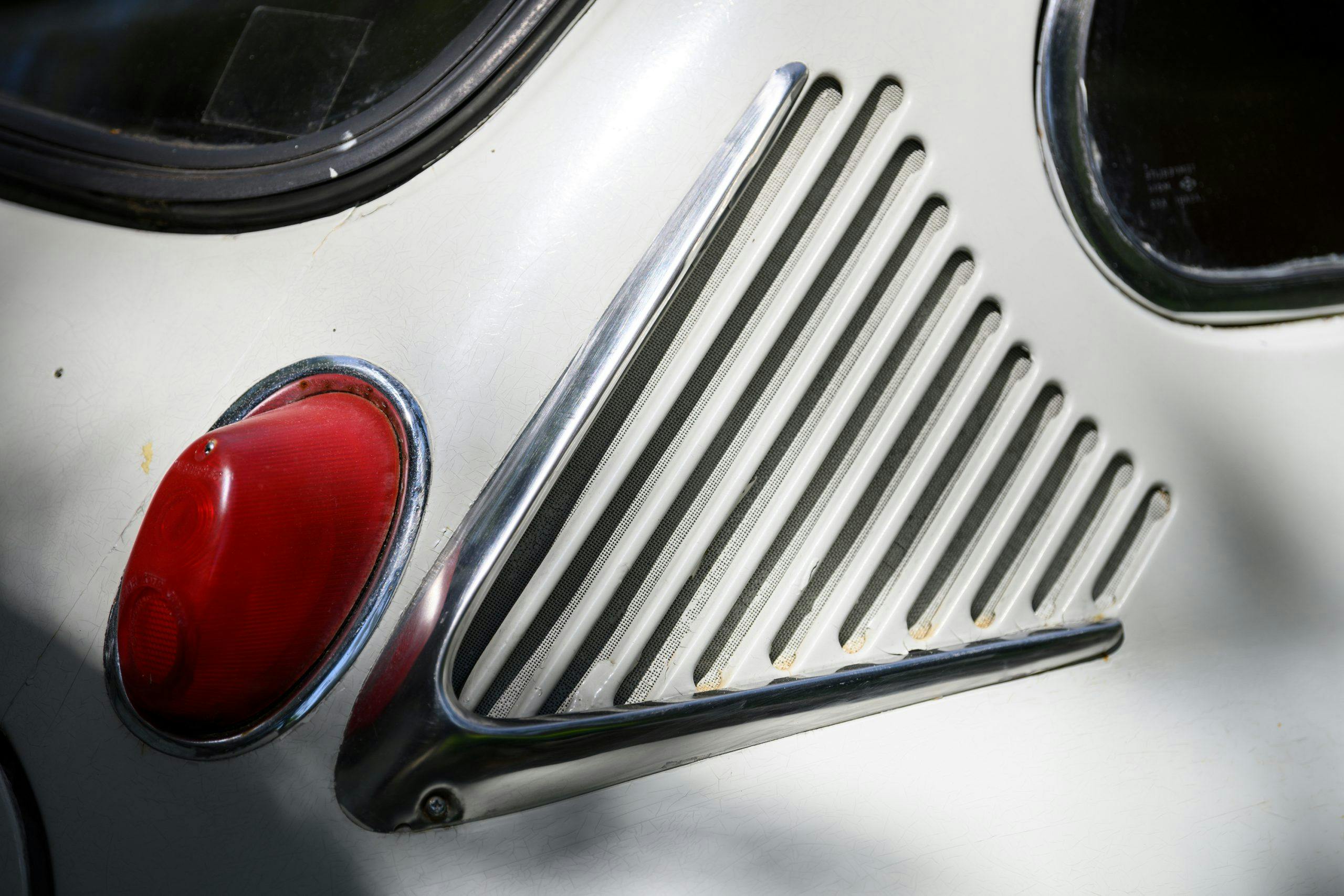
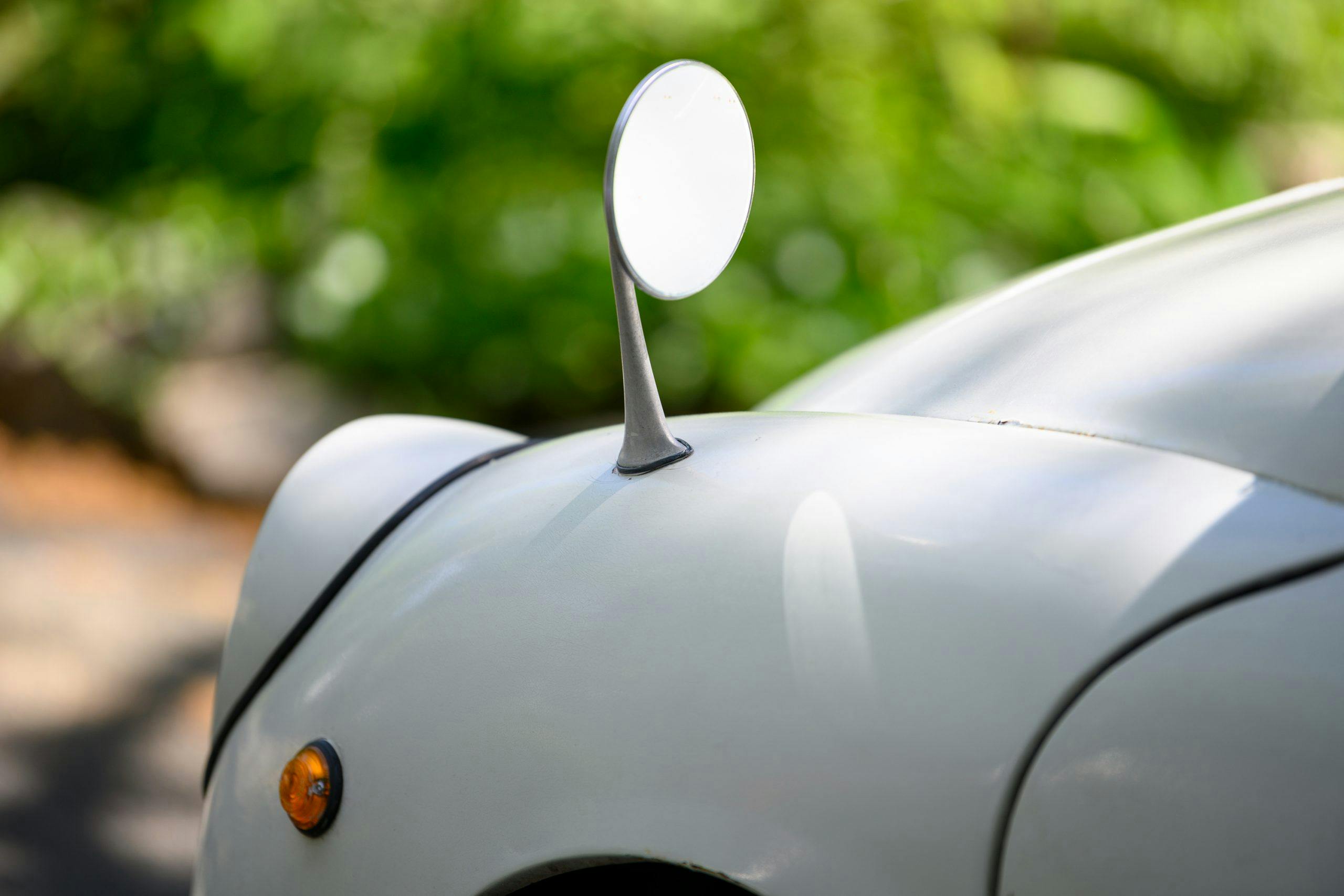
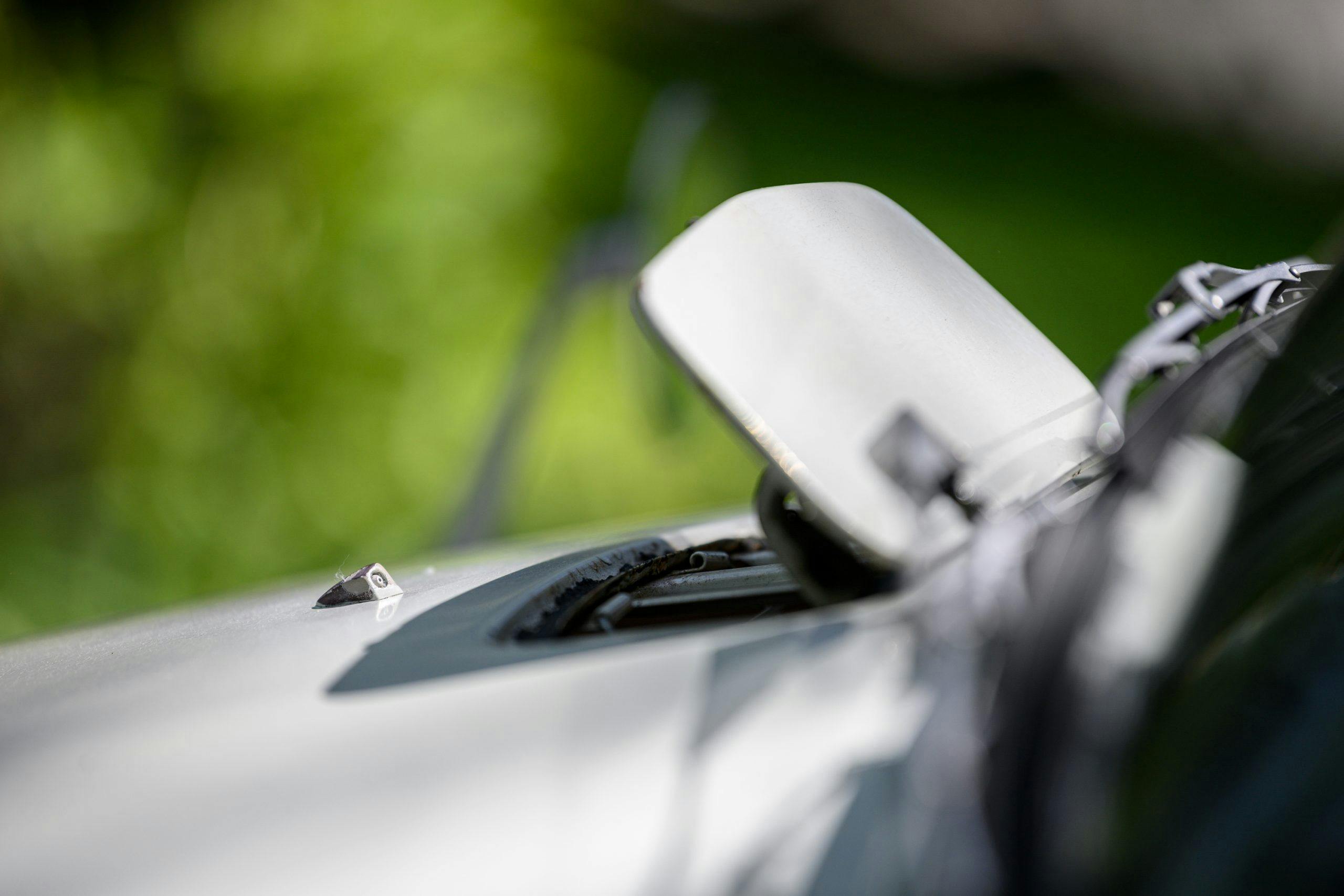
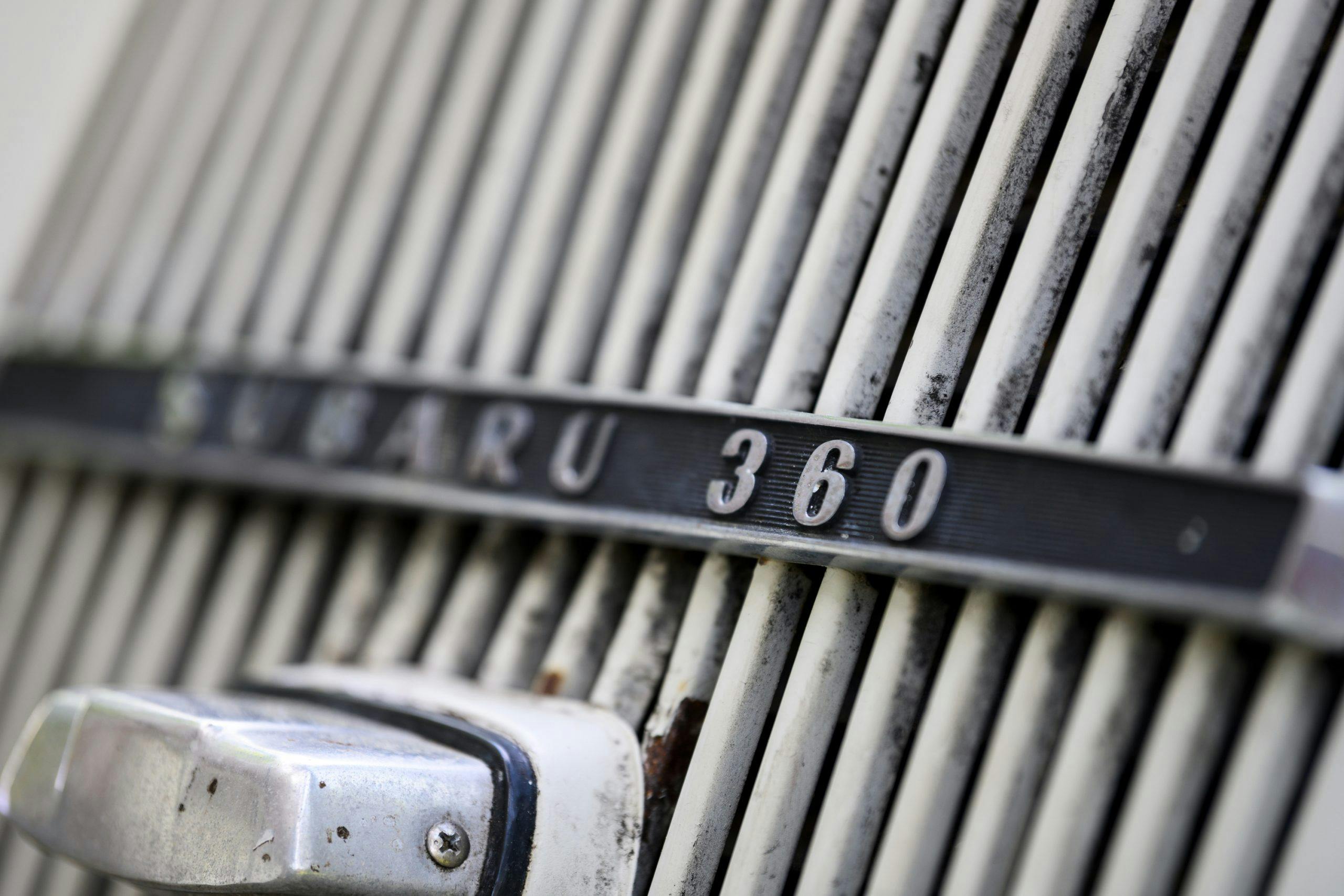
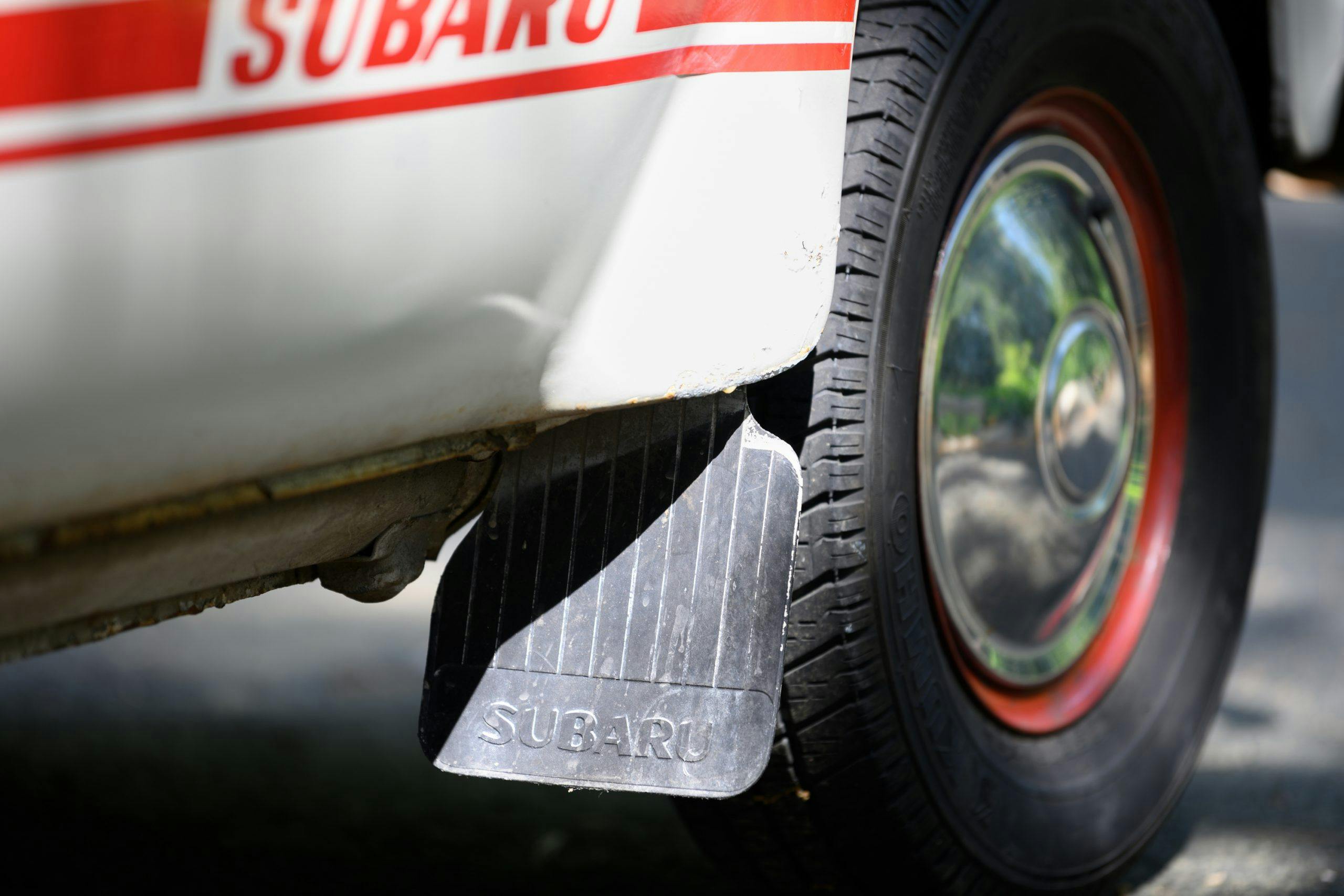
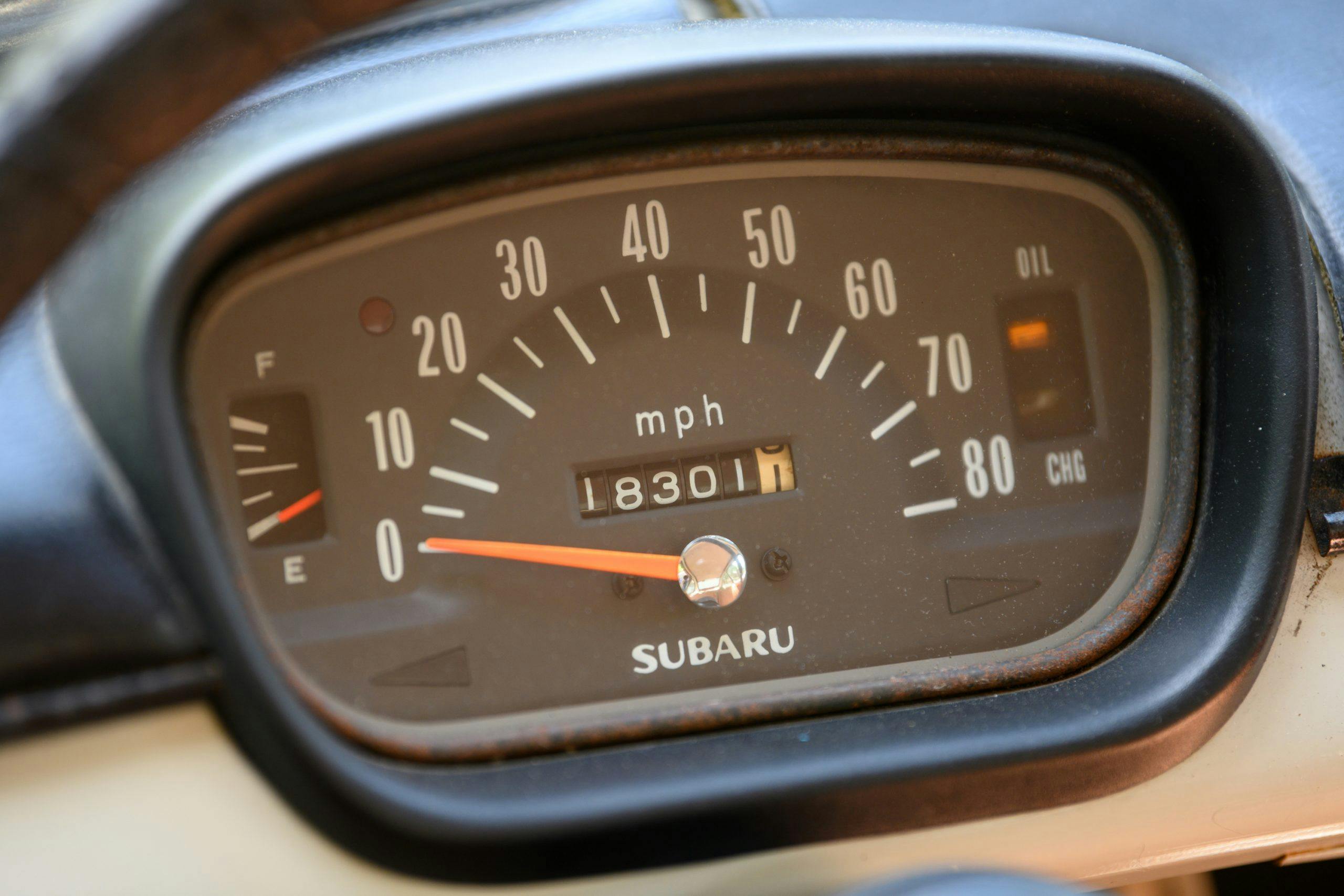


…nice read David, thanks! I drive either of my 2 Deux Chevaux at least twice a week; I’ve driven the Subaru 360 in the past and there is no comparison, really! One is a “mini” car, the other a “micro” car….both are fun in their own way.
Saw my first Subaru when I was in Boot Camp at Ft Dix NJ Summer ’70. There was a small dealer down the road from the Fort. Stopped in one afternoon, a fellow ‘cruit and I. The salesman gave us a very spirited run around their lot. Barely enough room for the three of us. Certainly a far cry from today’s Subarus!